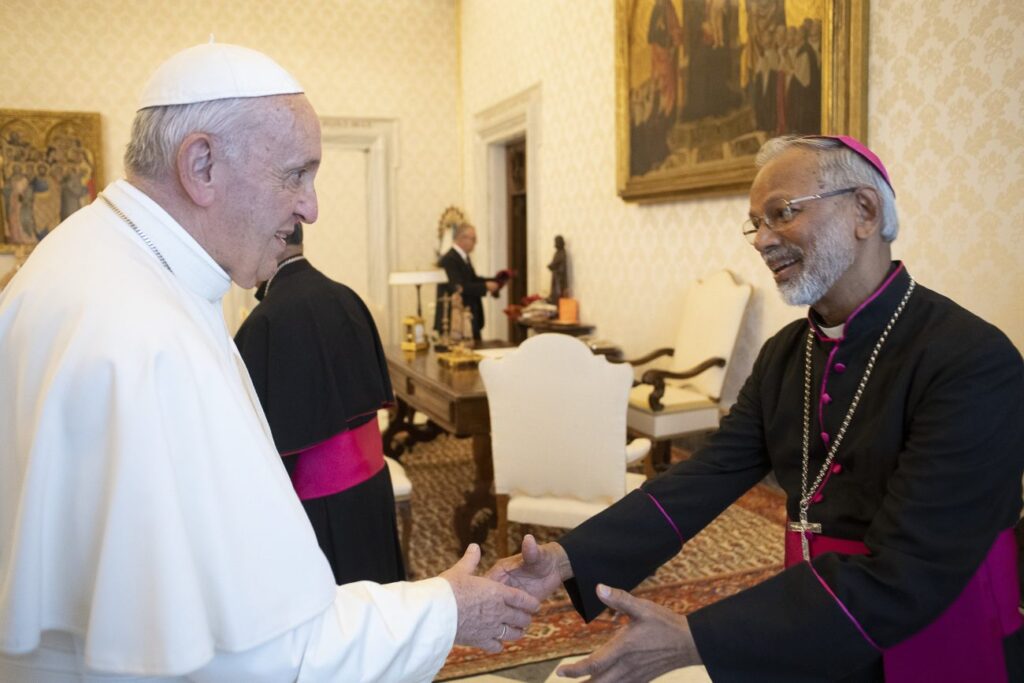When the reigning Pope creates new cardinals, it is because he is thinking not only of the Roman Catholic Church of today but, above all, that of tomorrow. Cardinals are those who, in addition to assisting the Pope with governing the universal Church, meet in conclave and elect the successor once the reigning one has died or, as in the case of Pope Ratzinger, resigns. By the end of August, Pope Francis has created 21 new cardinals (of which 16 are electors, that is, still under 80 years of age). In doing so, he has appointed two-thirds of the voting college of cardinals (should the conclave meet today) from the beginning of his pontificate. Note that the majority required for the election of the pope is just two-thirds. Most of the new cardinals and all those voting seem to belong to the pro-Francis area, that is, loyal to the line of the pope and in continuity with his approach.

When it comes to electing Francis’ successor, the overwhelming majority of the cardinals will have been created by Francis himself. Does this mean that they will vote for a “Franciscan” candidate, that is, one who carries out the agenda of the current papacy? It’s not for sure. The history of the conclaves, including the last one, indicates that electoral majorities do not predictably follow in the way they were formed, but can be constructed in an unexpected way. In any case, it is an indisputable element that Francis has now filled the conclave with cardinals of his appointment. On this point he followed not so much a “catholic” policy of choosing representatives of all the trends within Roman Catholicism (e.g. progressives, traditionalists, centrists, …) but a partisan one: he chose cardinals who meet his personal theological and pastoral preferences.
The geographical origins of the new cardinals are different. In this regard, it should be noted that Pope Francis has chosen the new cardinals from the “peripheries” of the Roman Catholic world: think of the bishops of Singapore, Mongolia and East Timor, small and decentralized episcopal sees that now become much more important. In Italy he appointed as cardinal the bishop of Como (a small diocese) while the nearby and large archdiocese of Milan still remains without a cardinal. In the USA he created as cardinal the bishop of San Diego (small in size) but left the much larger diocese of Los Angeles without. Pope Francis is like this: he is predictable in his willingness to unsettle established patterns that subvert expectations.
What does all this mean regarding the prospects of Roman Catholicism? Not much. Or rather: much as regards the internal dynamics in Rome, but much less with regards to the expectation of a “turning point” of Roman Catholicism in an evangelical direction. Whether the next pope is a “Franciscan” or a conservative, from the southern hemisphere or the Western world, elected by a narrow majority or by a large majority, in favor of synodality or centralizer, little of theological significance is going to change.
If the conclave would meet today, the most quoted candidates for the papacy are:
- Cardinal Luis Antonio Tagle (Philippines), who is thought of as being in line with Francis and represents the Roman Catholic Global South, but is perhaps too young (being born in 1957);
- Cardinal Matteo Zuppi (Italy), close to Francis but with his own independent posture;
- Cardinal Peter Ërdo (Hungary), a good candidate of the conservative wing, but European and therefore still from the “old” world;
- Cardinal Pietro Parolin (Italy), the current Vatican Secretary of State, in case the conclave ends up in a stand still and looks for a mediation between different groups.
Whoever the next pope is, unless there is a surprise that stems from the extraordinary providence of God, he will remain within the logic of Roman Catholicism, which moves along the lines of ecclesiastical politics but whose agenda does not include a way towards a reformation according to the gospel. The true reformation requires abandoning all that Rome has added to the evangelical faith (Marian dogmas, sacraments and practices that are not taught in Scripture, imperial and hierarchical structures, spurious if not really pagan devotions, etc.) to return to the biblical faith that is grounded in Scripture alone and centered on Christ alone. Unfortunately, everything that precedes the conclave does not seem to indicate any movement towards an evangelical reformation of the Roman Catholic Church, but only another page in the long history of Roman Catholicism.

